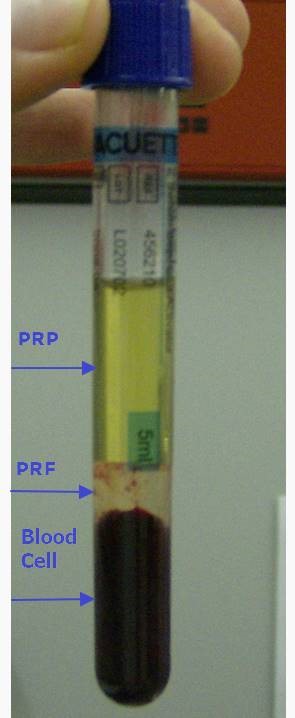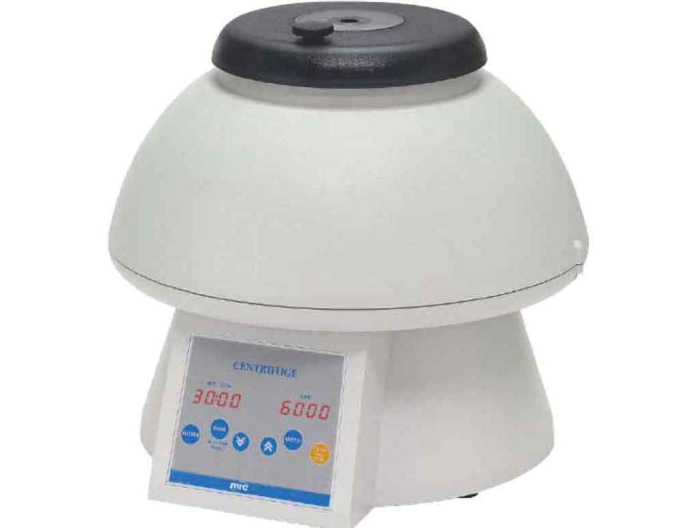Product category PRP & PRF centrifuges
In recent years dentists, plastic surgeons, hair transplants have been using blood products to heal and build the cells in the human body. They rely on the body's abilities to heal itself.
-The upper layer (above 50% of the test tube volume) in yellow This is the Platelet-rich plasma (PRP)
91% of the plasma fluid is water, 7-9% different proteins and 1-2% minerals.
Thin transparent layer beneath it (about 15%) white blood cells (platelets), Platelet-rich fibrin (PRF)
-And below (about one-third of the test tube volume) these red layers are red blood cells (platelets).

What are PRP & PRF centrifuges
Platelet-rich plasma (PRP) and platelet-rich fibrin (PRF) are treatments that utilize a person's own blood to promote healing and tissue repair. Both PRP and PRF involve the process of separating and concentrating platelets, which are a type of blood cell that contain growth factors and other substances that are essential for the body's healing process.
working principle of PRP & PRF centrifuges
PRP treatment involves taking a small amount of the patient's blood, usually from the arm, and placing it in a centrifuge to separate the platelets from the other blood cells. The concentrated platelets are then injected back into the body at the site of injury or tissue damage. PRP has been used in various medical procedures, including plastic surgery, sports medicine, and dental procedures, to promote healing and tissue repair.
PRF treatment is similar to PRP, but it involves the additional step of allowing the platelets to clot and form a fibrin matrix. The fibrin matrix is then used as a scaffold for the growth of new cells and tissue. PRF has been used in a variety of medical procedures, including periodontal surgery, bone grafting, and facial rejuvenation.
Both PRP and PRF are considered safe treatments with minimal risk of side effects. The primary benefit of these treatments is that they use the patient's own blood, so there is no risk of an allergic reaction or rejection by the body. However, as with any medical procedure, it is important to consult with a qualified healthcare provider to determine whether PRP or PRF is appropriate for the specific condition being treated.
Application of PRP & PRF centrifuges
Platelet-rich plasma (PRP) and platelet-rich fibrin (PRF) are treatments that utilize a person's own blood to promote healing and tissue repair. Both PRP and PRF involve the process of separating and concentrating platelets, which are a type of blood cell that contain growth factors and other substances that are essential for the body's healing process.
PRP has been used in a variety of medical procedures, including:
Plastic surgery: PRP has been used to enhance the healing process after facial surgery, breast augmentation, and other plastic surgery procedures.
Sports medicine: PRP has been used to treat muscle strains, ligament sprains, and other sports-related injuries. It may also be used to enhance the healing process after surgery for sports-related injuries.
Dental procedures: PRP has been used to promote healing after dental surgery, including tooth extractions and implant surgery. It may also be used to treat periodontal disease.
PRF has been used in a variety of medical procedures, including:
Periodontal surgery: PRF has been used to promote healing after gum surgery and to treat periodontal disease.
Bone grafting: PRF has been used to promote the growth of new bone tissue in cases where bone loss has occurred, such as after tooth extraction or in cases of osteoporosis.
Facial rejuvenation: PRF has been used in facial rejuvenation procedures to stimulate the growth of new collagen, which can help improve the appearance of wrinkles and fine lines.
It is worth noting that the effectiveness of PRP and PRF treatments is still being studied and is not fully understood. Some studies have shown positive results, while others have not. More research is needed to determine the most effective uses of these treatments and to determine their long-term effectiveness.
Hair loss:There is some evidence to suggest that PRP may be effective in treating hair loss. PRP is believed to stimulate the growth of new hair follicles by promoting the growth of new blood vessels and increasing the flow of nutrients to the scalp. Some studies have shown that PRP treatment can improve hair density and thickness in people with androgenetic alopecia (male or female pattern baldness).
PRF has not been studied extensively for the treatment of hair loss, and there is limited evidence on its effectiveness in this regard.
PRP Centrifuge
PRP Centrifuge brings automation & ease of operation with simple steps to separate the autologous PRP.
